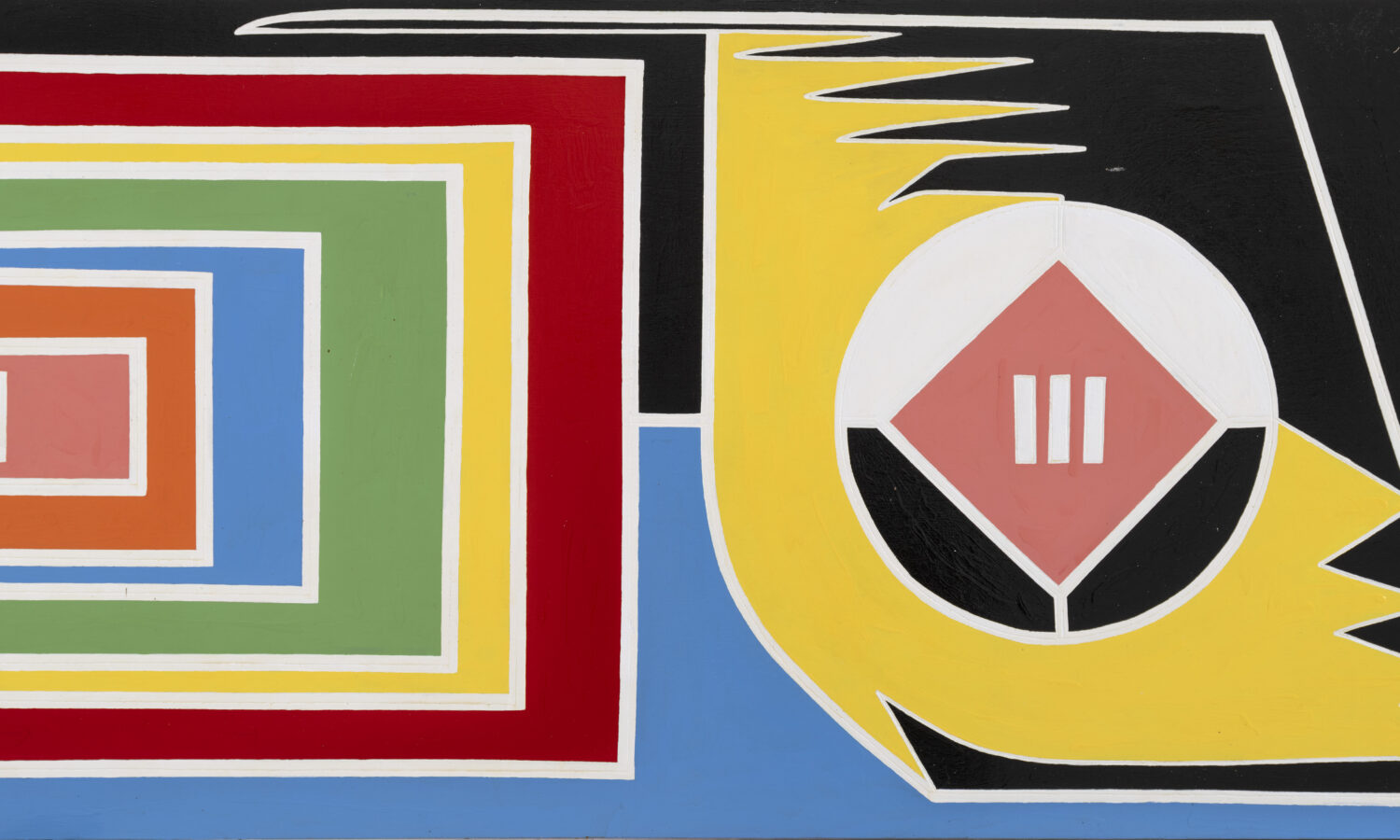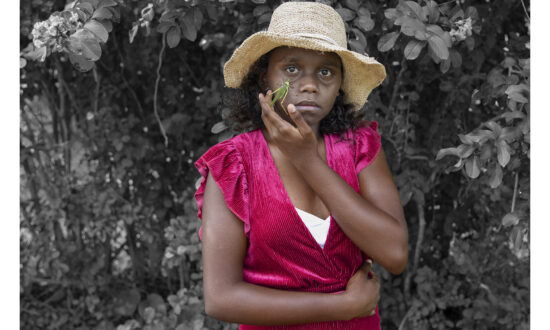Eric Bridgeman’s life is divided between two homes and the result is a fascinating cross- cultural expression. In the artist’s latest exhibition at Milani Galler his art practice and identity (as an artist who lives and works in Brisbane and Papua New Guinea) deliver a group of large exuberant paintings, double hung in this high space – a colourfully immersive scrum.
His interests in the theatre of sport, historical conflict and cultural survival are woven into images that include new figurative references. The work is grounded by Arebaa / Sun and Moon, its cyclical, symbolic, tribal and individual meanings.
The largest painting is Kumul, Paradising (Are Uma Baa/The Sun Kissed the Moon), 2023. In it three yellow diamonds dominate with the shape of the bird of paradise overwritten with calligraphic motifs, shapes, colour and text. A poem sits adjacent, tiny on the wall, largely in language. The words in English mean “Give the war cry, The Sun kissed the Moon” and they evoke Bridgeman’s conflicts, some associated with revival of traditional practices (like shield-making), in the contemporary environment where violence is not relevant but the artefacts of war still inspire designs and motifs.
This body of work was stimulated by the gift of a shield featuring the Arebaa traditional design belonging to Bridgeman’s Papua New Guinea tribe, the Yuri, earlier this year. His paintings are contextualised by an entry room featuring shield designs made using natural pigment and materials by the men’s arts collective Haus Yuriyal that he convenes in PNG, made up of people largely from the Yuri tribe. These designs range around the walls, their patterns compelling and lyrical, a pleasure to view.

Get InReview in your inbox – free each Saturday. Local arts and culture – covered.
Thanks for signing up to the InReview newsletter.
While Bridgeman has painted shields in recent years, this exhibition takes the stylistic influence and motifs further, delving into the personal. About ten years ago Bridgeman had an accident, falling from a roof. Eric, the boy who could fly, 2023 is a horizontal painting suspended in the space, showing a body as disconnected and fractured shapes. On the back, he has painted the disarrangement, further fragmented, with text (of sorts) that notes Eric’s inability to fly.
Bridgeman’s shields have been described as fictional assays, grounded in and reviving a bold tradition. Overlaid with his personal narratives, they bring the old and the new together with significant aesthetic power and wit.
Yuriyal Eric Bridgeman, ‘Arebaa / Sun and Moon’ Milani Gallery, 270 Montague Road, West End, 9 – 30 September 2023
milanigallery.com.au
Support local arts journalism
Your support will help us continue the important work of InReview in publishing free professional journalism that celebrates, interrogates and amplifies arts and culture in South Australia.
Donate Here




